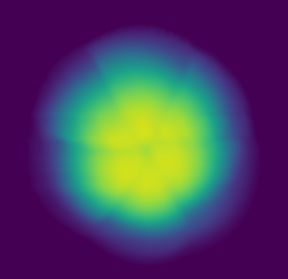Defence of doctoral thesis in the field of engineering physics, Benjamin Alldritt

When
Where
Event language(s)
For the first time ever, the properties of three-dimensional nanostructures were identified utilizing a combination of atomic force microscopy (AFM) and machine learning. This dissertation, with collaboration between the Atomic Scale Physics (ASP) and Surfaces and Interfaces at the Nanoscale (SIN) groups, explored how to directly predict the molecular structure of a single camphor molecule, identify key features of single molecules directly from their images, and automate critical tasks for atomic scale imaging. The successful imaging of these molecules and pathway created by these machine learning models opens the door for applying high-resolution AFM to more complex systems, where routine imaging at the atomic scale would represent a significant breakthrough.
To explore the realm of individual atoms and molecules, a microscope that relies on atomic forces, rather than rays of light or electrons, was used. Analogous to a record player, this instrument uses the end of an atomically sharp needle to “read” the bumps and grooves of the surface. To sense the atoms on the surface, the microscope measures the deflection of the tip, which may only change by a fraction of a nanometer – a millionth of a millimeter. While these microscopes have existed since the 1980s, their capabilities have expanded recently by changing the last atoms at the end of the tip. After attaching a single molecule, such as carbon monoxide, to the end of the tip, a significant increase in spatial resolution was achieved. Most of the molecules identified with this method lay flat across the surface and are easy to interpret. The challenge lies with non-flat molecules, which may curl like a ball or have pieces sticking out at odd angles. Even for a skilled experimental researcher, this image becomes difficult to interpret. Image classification has become a booming field through advancements in deep learning methods and low-cost hardware. Multiple machine learning models were constructed, making it possible to analyze substantial amounts of experimental data, identify key features and reduce the number of possible molecular solutions from a set of experimental images.
In summary, this dissertation helps expand the number of tools in the nanoscale toolbox which help automate basic laboratory tasks and identify key molecular properties of single molecules. These tools will be important for identifying functional groups in unknown molecules and innovative studies in life sciences and biochemistry.
Opponent is Professor Philip Moriarty, University of Nottingham, UK
Custos is Professor Peter Liljeroth, Aalto University School of Science, Department of Applied Physics
Contact details of the doctoral student: [email protected]
The public defence will be organised via Zoom. Link to the event
The dissertation is publicly displayed 10 days before the defence in the publication archive Aaltodoc of Aalto University
- Published:
- Updated: